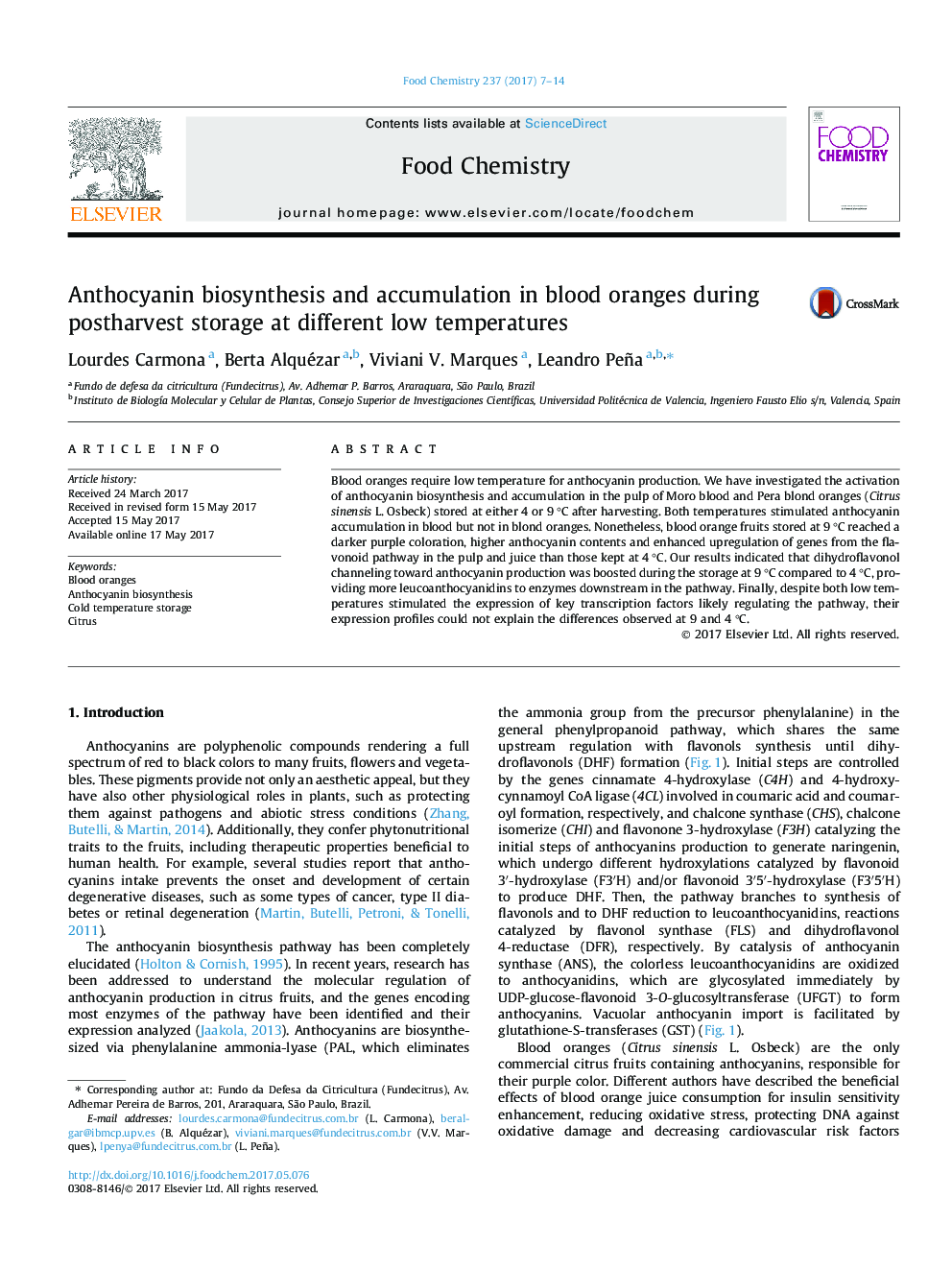| Article ID | Journal | Published Year | Pages | File Type |
|---|---|---|---|---|
| 5132696 | Food Chemistry | 2017 | 8 Pages |
â¢Anthocyanin content in blood oranges was higher at 9 than at 4 °C of storage.â¢This concurred with enhanced upregulation of genes from the pathway at 9 °C.â¢Transcript ratio values showed favored flux to dihydroflavonols at 9 °C.â¢Key transcription factors were not involved in regulating these differences.
Blood oranges require low temperature for anthocyanin production. We have investigated the activation of anthocyanin biosynthesis and accumulation in the pulp of Moro blood and Pera blond oranges (Citrus sinensis L. Osbeck) stored at either 4 or 9 °C after harvesting. Both temperatures stimulated anthocyanin accumulation in blood but not in blond oranges. Nonetheless, blood orange fruits stored at 9 °C reached a darker purple coloration, higher anthocyanin contents and enhanced upregulation of genes from the flavonoid pathway in the pulp and juice than those kept at 4 °C. Our results indicated that dihydroflavonol channeling toward anthocyanin production was boosted during the storage at 9 °C compared to 4 °C, providing more leucoanthocyanidins to enzymes downstream in the pathway. Finally, despite both low temperatures stimulated the expression of key transcription factors likely regulating the pathway, their expression profiles could not explain the differences observed at 9 and 4 °C.
